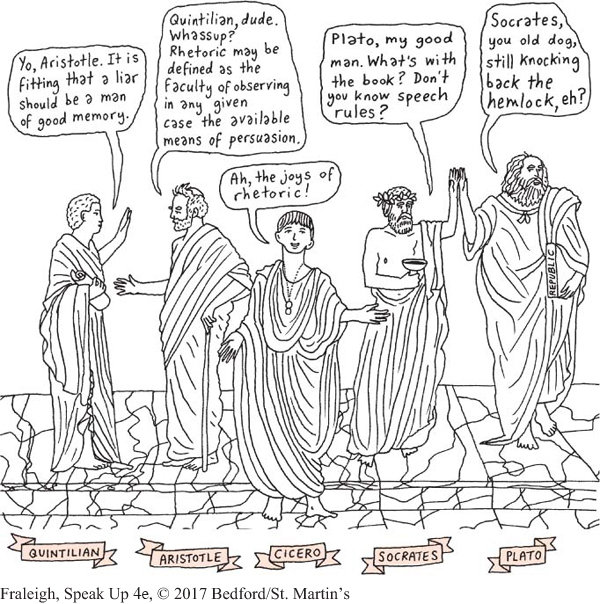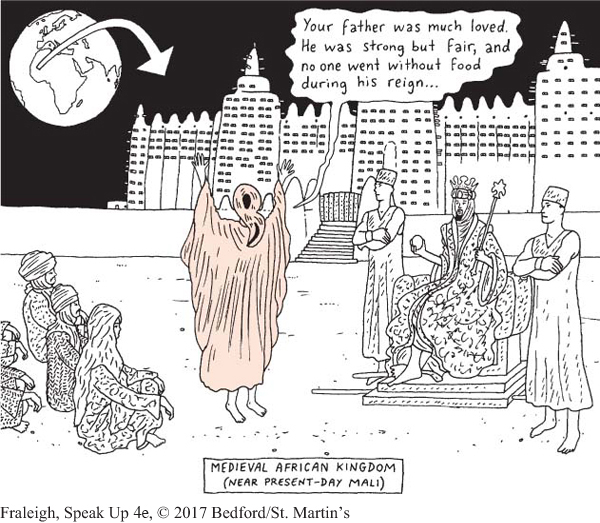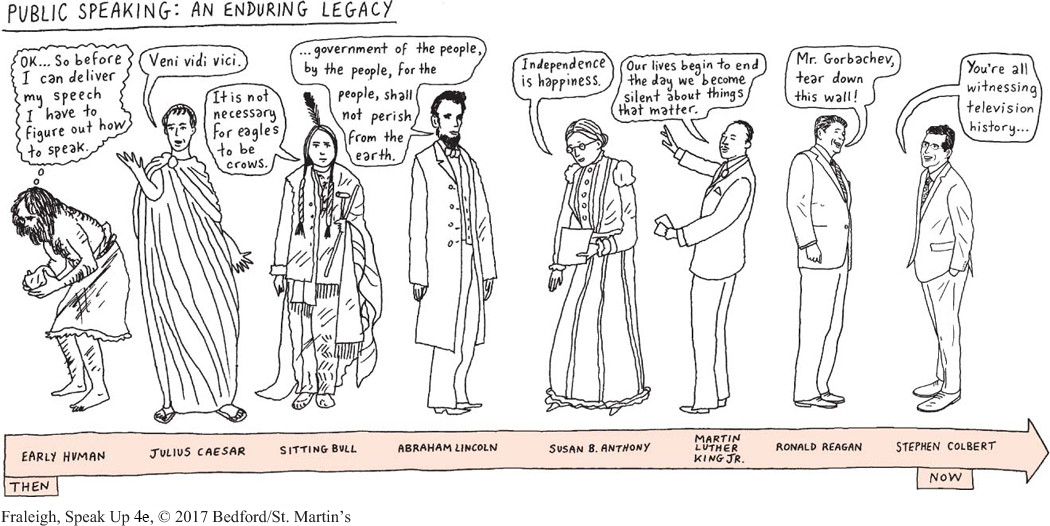Public Speaking: A Great Tradition
For centuries, people around the world have studied the art and practice of public speaking and used public address to inform, influence, and persuade others. As far back as the fifth century BCE, all adult male citizens in the Greek city-
Page 13

The tradition of public speaking was not limited to Greece and Rome: it’s been practiced in many regions throughout history. From the time of Confucius in the fifth century BCE until the end of the third century BCE, China enjoyed an intellectual climate whose energy rivaled that of ancient Greece.16 Scholars traveling throughout China passionately advocated a variety of systems of political and economic philosophy. In fifteenth-
Page 14

The United States also has a rich history of public speaking. During the Great Awakening of the 1730s and 1740s, preachers sought to revive waning religious zeal in the colonies, often preaching in fields to accommodate the many listeners. During the American Revolution in the second half of the eighteenth century, colonists took to the streets to passionately decry new taxes and also launched the Boston Tea Party, in which they dressed as Mohawk Indians, boarded three ships in Boston Harbor, and hurled the vessels’ cargoes of tea overboard. In the 1770s and 1780s, political leaders in each of the states energetically debated the merits of ratifying the U.S. Constitution and the Bill of Rights.
Page 15
In the nineteenth century, public speaking became a hallmark of American society, as people debated political issues, expanded their knowledge, and even entertained one another. Political debates drew particularly large and enthusiastic crowds, such as the debates between Abraham Lincoln and Stephen Douglas during the Illinois Senate election. More than fifteen thousand people gathered to hear the contenders in Freeport, Illinois—
The antislavery movement of this time also used public speaking to drive major social change. Frederick Douglass, a former slave who moved audiences with his depictions of life under slavery, counted among the most compelling antislavery speakers. Women also actively participated in the American Anti-
During the twentieth century, public address continued to play a key role in American and world affairs, especially from political leaders throughout both world wars and the Great Depression. In August 1963, 250,000 people gathered near the Lincoln Memorial in Washington, D.C., to hear Martin Luther King Jr. deliver his “I Have a Dream” speech,23 an address that instantly excited the imaginations of people around the world. In June of that same year, President John F. Kennedy traveled to Berlin to speak to an audience of over 400,000, voicing his support for those blocked in by the Berlin Wall—
Page 16

Twenty-
Today, new means of digital communication (such as social media, smartphones, and videoconferences) allow people to use technology to connect with distant audiences almost instanteously. Nevertheless, from presidential State of the Union addresses to Academy Awards acceptance speeches, public speaking before live audiences remains an important part of our social fabric.
Page 17